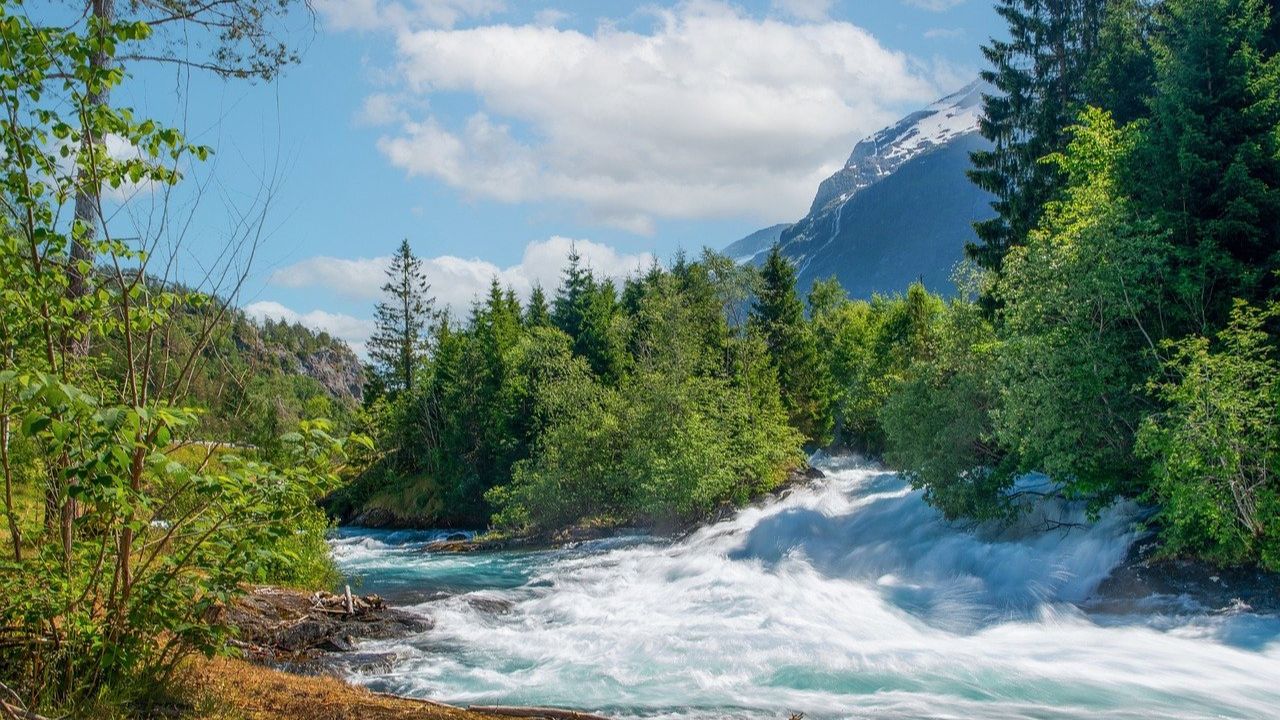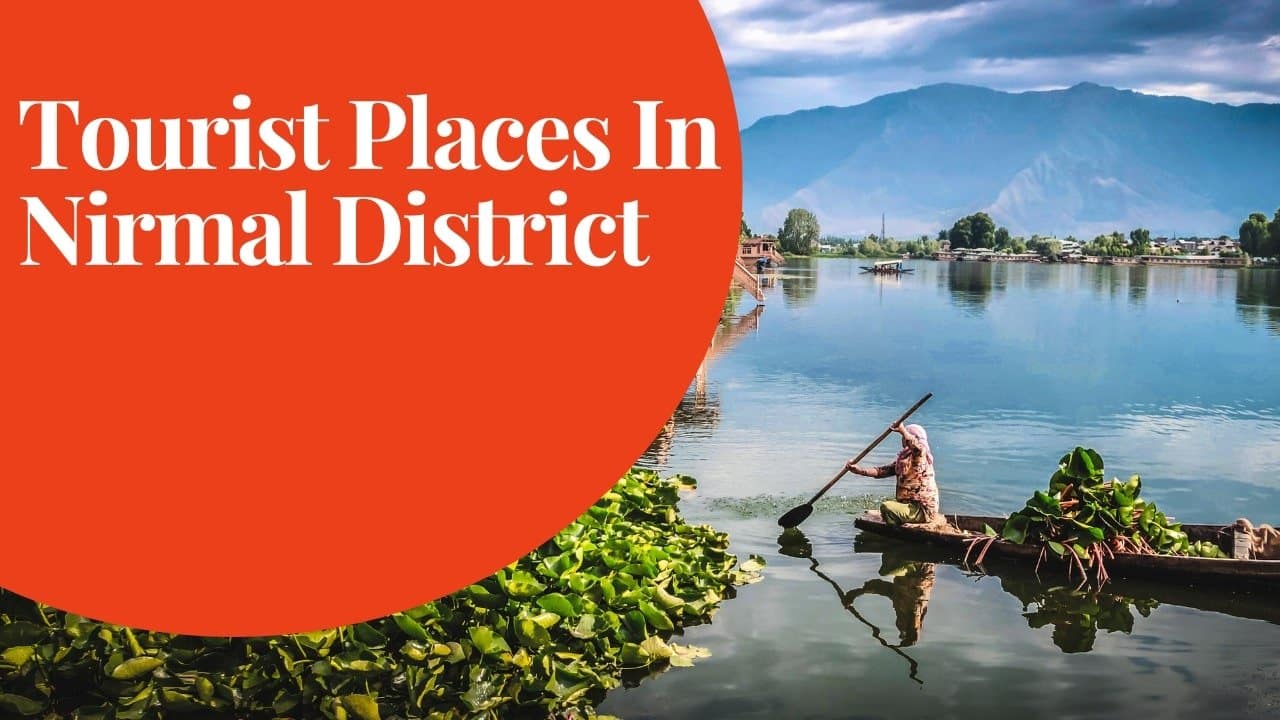Tourist Places In Nirmal District
Tourist Places In Nirmal District in India’s southern Telangana, is a hidden gem that passionate travellers and tourists should discover. With its rich cultural legacy, tranquil natural surroundings, and historical significance, the Nirmal district provides an enjoyable experience for travellers seeking a mix of tradition and adventure. Let us begin on a journey to discover the fascinating tourist attractions that this neighbourhood has to offer.
Basar Saraswathi Temple
Devotees and spiritual seekers throng to Basar Saraswathi Temple, which honors the goddess Saraswathi, the deity of knowledge and wisdom. This temple, located along the banks of the River Godavari, emanates peace. The temple’s architecture, elaborate carvings, and complex decorations are breathtaking.
Adilabad Fort
The beautiful Adilabad Fort, situated in the tranquil Adilabad district of Telangana, India, is a tribute to the region’s rich history and architectural magnificence. This medieval fort, also known as the Khilla, has seen centuries of turbulence, conquests, and cultural exchanges, making it an intriguing subject of study for history buffs.
Origins and Construction
The Adilabad Fort dates back to the 13th century when it was established by the Kakatiya dynasty, a notable South Indian monarchy known for its impressive architectural achievements. Constructed on a mound, the fort was deliberately positioned to provide a commanding view of the surrounding area, giving its inhabitants a significant defensive advantage.
Strategic Importance
Over the ages, the fort has changed hands several times, witnessing the rise and collapse of various kingdoms, such as the Bahmani Sultanate, the Qutb Shahi dynasty, and the Mughals. Its strategic location made it a prized possession for kings competing to control the region, resulting in countless conflicts and sieges Tourist Places In Nirmal District.
Architectural Marvel
The Adilabad Fort has an excellent architectural design, featuring solid walls, bastions, and entrances. The stronghold was built with locally sourced resources like stone and mortar, demonstrating the inventiveness of ancient builders. Within its walls are relics of palaces, temples, and other constructions, providing a look into the splendor of bygone ages.
Cultural Heritage
Besides its military significance, the Adilabad Fort was also a cultural and commercial hub. It facilitated commerce routes and cultural contacts between many locations, contributing to socioeconomic development. The fort’s architecture incorporates a variety of influences, including Hindu, Islamic, and Persian forms, highlighting the region’s complex cultural background.
Kadam Dam
In the heart of Maharashtra, India, stands a unique tower that has played a critical part in the region’s development and prosperity: the Kadam Dam. This enormous dam, set in lovely surroundings, is essential to the region’s history and heritage. Let’s look at the Kadam Dam’s history and see how it has changed.
Environmental Conservation
Beyond its role in water management and agriculture, the Kadam Dam has had a favorable environmental impact. The reservoir produced by the dam has become a habitat for many aquatic species and a water source for wildlife, helping to conserve biodiversity in the area.
Furthermore, the dam has contributed to flood control by managing water flow downstream, lowering the risk of flooding during heavy rains.
Tourism and Recreation
Tourist Places In Nirmal District In addition to its practical value, the Kadam Dam has become a popular tourist and leisure site. Visitors flock to the dam to view its engineering marvel, go boating and fishing in the reservoir, and relax in the peaceful environs.
The area’s stunning appeal, rich flora, and tranquil lakes make it a perfect destination for nature lovers and adventurers.
Kuntala Waterfall
Nestled in the thick greenery of Telangana, India, is a natural treasure that has enthralled travelers for centuries: the spectacular Kuntala Waterfall. This spectacular cascade, which descends from over 200 feet, has a particular place in the hearts of locals and tourists. Let us begin to discover the enchanting history of Kuntala Waterfall.

Ancient Roots
Kuntala Waterfall’s history dates back to ancient times when it was known as “Soma Gundam.” According to local folklore, the waterfall’s name comes from Shakuntala, a mythical character from Hindu mythology. It is reported that Shakuntala, King Dushyanta’s wife, bathed in the waters of this spectacular waterfall, giving it its name in legend.
Natural Formation
The Kadam River rushes down the steep terrain of the Sahyadri mountain range, forming the Kuntala Waterfall. The surrounding trees contribute to the waterfall’s charm, creating a calm setting for those seeking comfort in Mother Nature’s lap.
Cultural Significance
Beyond its natural beauty, Kuntala Waterfall is culturally and religiously significant to the locals. Devotees frequently visit the waterfall, believing it to be a sacred spot for spiritual purification and divine benefits. During festivals and religious occasions, pilgrims go to the waterfall to worship and seek God’s blessings.
Tourist Attraction
Kuntala Waterfall has recently emerged as a renowned tourist resort that attracts visitors from all over the world. The waterfall’s rustic appeal attracts adventurers and nature enthusiasts who can go trekking, photographing, and exploring.
The neighboring woodlands support a rich diversity of flora and fauna, which adds to the area’s attractiveness for wildlife lovers.
Conservation Efforts
As Kuntala Waterfall’s popularity grows, so does awareness of the significance of conservation and sustainable tourism. Efforts are being made to protect the natural ecology surrounding the waterfall and promote responsible tourist practices among visitors.
Local governments and environmental organizations are collaborating to preserve the magnificence of Kuntala Waterfall for future generations to enjoy.
Nirmal Paintings
Nirmal, a tiny village set amidst the beautiful landscapes of Telangana, India, is home to a traditional art style that has grabbed the interest of art enthusiasts for centuries: stunning Nirmal paintings.
With their brilliant colors and elaborate motifs, these paintings tell stories about tradition, culture, and heritage. Let us start on a journey to discover the exciting history of Nirmal paintings.

Origins and Heritage
The history of Nirmal paintings dates back to the 17th century during the reign of the Nizams of Hyderabad. Over time, Nirmal paintings evolved into a distinct style characterized by natural dyes, intricate brushwork, and motifs inspired by nature and mythology.
Traditional Techniques
Nirmal artworks are made with natural materials from the region’s plentiful forests. Artisans create colors from plant extracts, minerals, and other organic ingredients, giving their paintings distinct hues and textures. The paintings are often done on wooden panels or cloth, with painters using brushwork, stippling, and shading to achieve excellent visual results.
Themes and Motifs
Nirmal paintings frequently feature subjects from Hindu mythology, folklore, and daily life. The art form is noted by its vibrant colors, intricate designs, and incredible attention to detail, which bring the subjects to life with vivid realism.
Common motifs include floral designs, geometric patterns, and images of gods, goddesses, and mythical animals, representing the region’s rich cultural legacy.
Cultural Significance
Nirmal paintings are significant regional cultural and religious artifacts used as decorative objects in houses, temples, and palaces.
Shivaram Wildlife Sanctuary
The Shivaram Wildlife Sanctuary, located in the heart of Karnataka, India, is home to a rich range of flora and fauna. This natural refuge, stretched across lush foliage and clean landscapes, has a rich history dating back millennia. Let us set out on a tour to discover the fascinating history of the Shivaram Wildlife Sanctuary.
Natural Heritage
The sanctuary has ecological significance. The region has a wide range of flora. The refuge provides a glimpse into the grandeur of nature, including towering trees, elusive creatures, and abundant wildlife best places to visit in Nirmal
Conservation Efforts
Over the years, the Shivaram Wildlife Sanctuary has been instrumental in wildlife protection and habitat restoration. Forest officials, conservationists, and local communities have worked tirelessly to safeguard endangered animals such as the Indian elephant, tiger, leopard, and deer.
Initiatives like anti-poaching patrols, habitat restoration initiatives, and community-based conservation programs have all contributed to the sanctuary’s natural integrity.
Educational and recreational opportunities
Over the years, the Shivaram Wildlife Sanctuary has played an essential role in wildlife conservation and habitat restoration. Forest officials, conservationists, and local communities have worked relentlessly to protect endangered species like the Indian elephant, tiger, leopard, and deer.
Anti-poaching patrols, habitat restoration measures, and community-based conservation programs have all helped to preserve the sanctuary’s natural integrity.
Challenges and Future Outlook
Despite its conservation achievements, the Shivaram Wildlife Sanctuary confronts several difficulties, including habitat fragmentation, human-wildlife conflict, and unsustainable land use practices.
Rapid urbanization and encroachment endanger the sanctuary’s delicate ecosystems, emphasizing the need for proactive conservation measures and community participation activities.
Also Read
